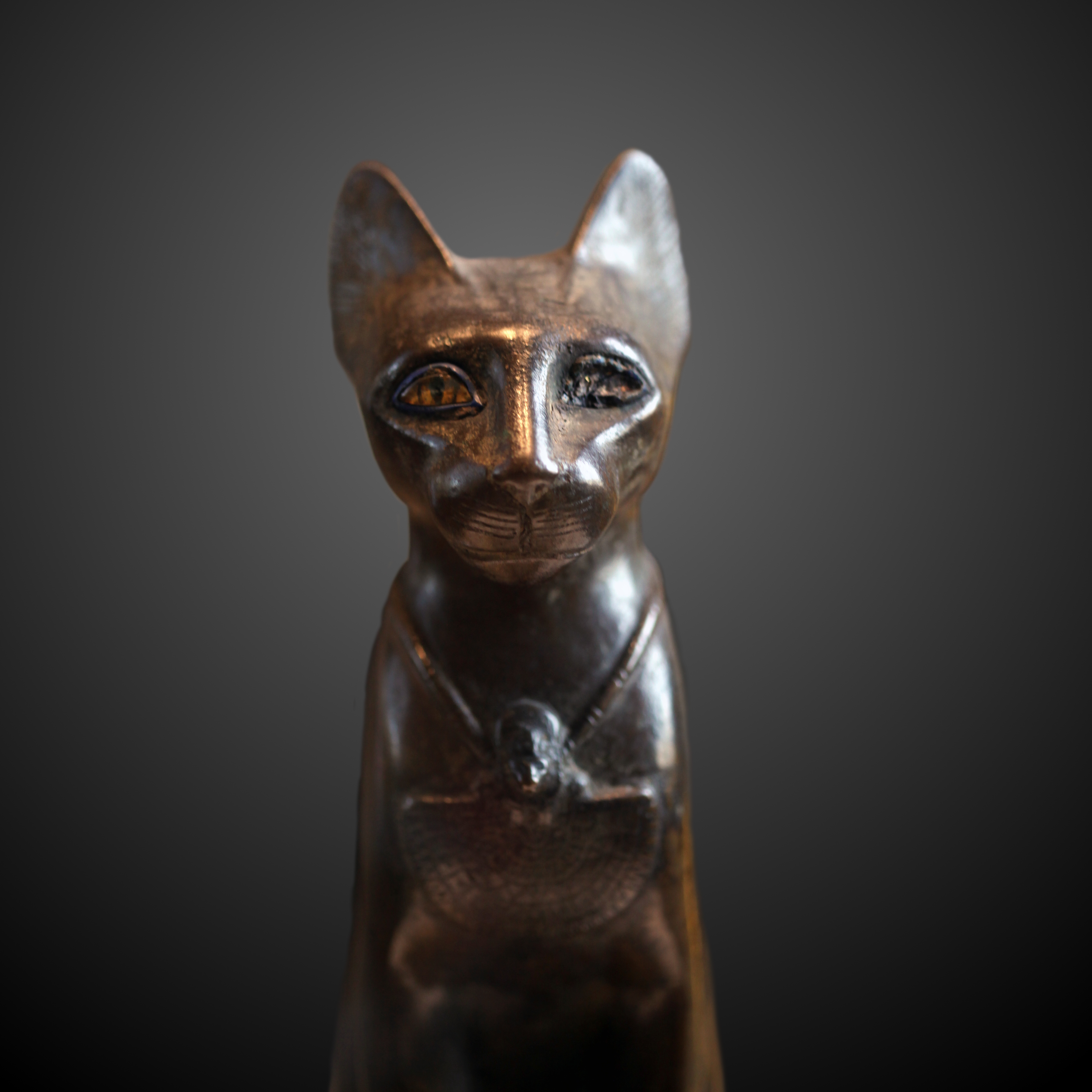Hail, Tenemiu, who comest forth from Bast - Book of the Dead
Bastet was a feline goddess who began as a ferocious lion headed goddess, that eventually transformed into a milder cat goddess. Indeed, early depictions of the goddess during the 2nd Dynasty feature her with the head of a lioness. During the Middle Kingdom, she became associated with cats and near the end of the New Kingdom, she was mainly portrayed as a cat-headed woman. Basted was one of the premiere goddesses for protection, nurturing and fertility.

Bastet Depicted as a Cat |

Bastet Depcited in Her Anthropomorphic Form |
His mother Bastet has taken him, she in the midst of Nekheb has nurtured him. - Pyramid Texts
A constant theme of Bastet was her role as a protector and the different forms her protection took. Within the Pyramid Texts she is portrayed as a mild, nurturing mother and nurse of the king. Her protection wasn’t just for the Pharaoh but for mothers and the deceased as well. Bastet is often depicted with a litter of kittens at her feet. While Bastet became known to be a mild and nurturing goddess, she was initially more vicious and the earliest depictions of her were lion headed instead of the familiar cat depiction. Even in her milder depictions as a nurturing deity, Bastet was still ferocious when necessary. One of her roles was the daughter of Re, and she was often depicted in her cat form slaying the great serpent Apophis with a large knife. Not only did she help protect the sun god, but she also aided in protection from what the Egyptians called “demon days” that occurred at the end of the year.
Bubastis was the cult center of the goddess with a temple that Herodotus describes as, "...none pleasanter to the eye than this." One of the most popular offerings to the goddess was that of mummified cats. The manufacture of cat mummies exploded, particularly during the Greco-Roman period as the Greeks and Romans spread her cult outside of Egypt. Cat amulets and litters of kittens were popular New Year gifts. Another popular devotion to her was to inscribe one’s name on a ceremonial New Year flask to evoke fertility from the goddess.
Bastet had been an important deity from very early on in Egypt’s history. The temple of Khafre records only 2 goddesses, Hathor, associated with southern Egypt, and Bastet associated with the north. Bastet's cult spread far and wide beyond the borders of Egypt. Her status as protector and fertility goddess, along with the importance of cats in the protection of agriculture ensured that her cult endured and flourished.

